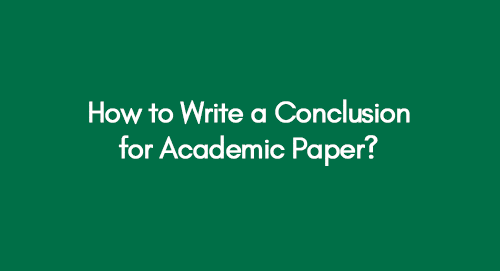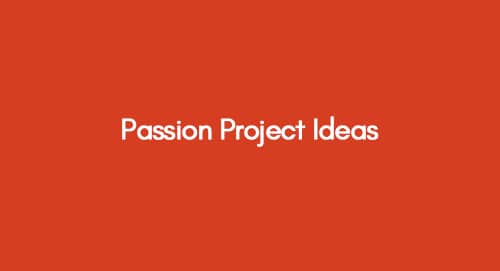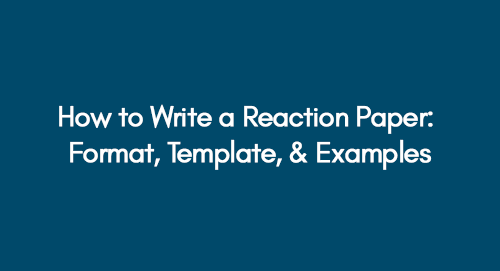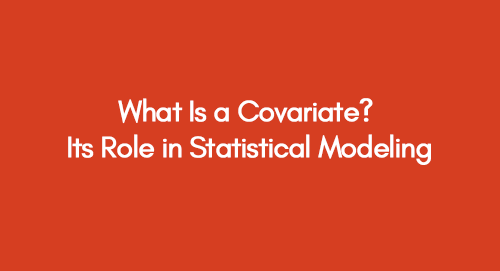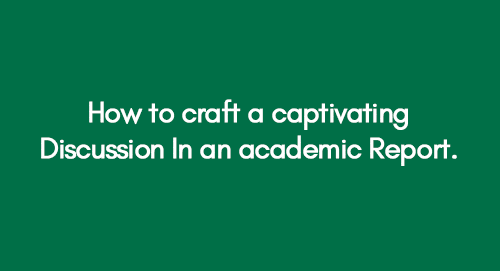
How to Craft a Captivating Discussion in an Academic Report | Tips and Examples
October 13, 2022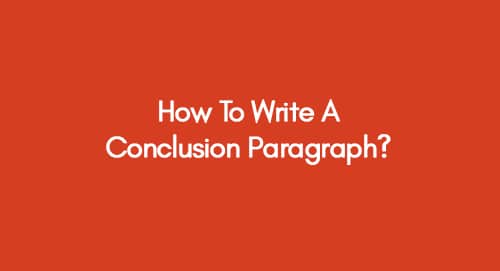
How To Write A Conclusion Paragraph: Examples and Strategies for an Effective Conclusion
October 14, 2022Crafting a stellar conclusion is often the cherry on your academic paper. It's where your arguments come full circle, providing a comprehensive closure to the ideas you've presented. While many underestimate its value, the conclusion can make or break your paper’s impact. This guide delves deep into insider tips and explanations on nailing that final touch.
Learn More about Writing Conclusion for a Report
The Purpose of a Conclusion
Let's understand the ' why ' before diving into the 'how'. The conclusion serves three primary roles:
- Summarise Key Points: Revisit the primary arguments and findings without introducing new ones.
- Restate the Importance: Why does your research matter? What value does it add to the academic discourse?
- Leave a Lasting Impression: Your final words should resonate, encouraging readers to reflect on the implications of your work.
The Anatomy of an Effective Conclusion
1. Start With a Transition
Begin by signalling that you're wrapping things up. Phrases like "In conclusion", "To sum up", or "Ultimately" can be effective. However, avoid being too repetitive or predictable.
2. Reiterate Your Thesis
Bring back your central argument. Reintroduce the thesis statement nuancedly, considering the evidence and arguments you've provided throughout the paper.
For instance, if your thesis was about the effects of climate change on agriculture, you could say, "Considering the evidence presented, it's undeniable that climate change profoundly impacts agricultural patterns."
3. Recapitulate Main Points
Briefly recap the main arguments, insights, or findings. This doesn't mean copying and pasting from earlier sections but distilling the essence of your arguments concisely.
4. Discuss Implications
Here's where you address the 'so what' of your paper. Why is your research pivotal? How does it fit into or disrupt the current academic landscape? What might it mean for future studies or practical applications?
5. Offer Recommendations
Especially pertinent for research-heavy papers, suggesting next steps or potential solutions can add depth. This can be through further research recommendations, policy suggestions, or practical implementations.
6. End With a Thought-Provoking Statement or Question
Leave your reader pondering. Make it memorable, whether it's a quote, a question, or a bold statement.
For example, "As we stand on the brink of catastrophic climatic changes, one must question – what will the future hold if immediate actions aren't taken?"
Get a Dissertation Proposal – Get Going!
Dissertation Proposal Lays Down the Outline of Your Final Dissertation
Get a Dissertation Proposal that matches your requirements, which includes the topic title, research aim and objective, research questions, research gap, literature review, methodology and list of reference papers.
The Dissertation Proposal will be foundation of your final dissertation. It is very important to get this done perfectly to avoid any problems!
Different Types of Conclusions
When deciding how to write a conclusion, consider the type of closure you want. Your choice of how to write a conclusion will rely on your paper's research topic and format. You can choose which method to use while writing your Conclusion by consulting the information below.
1. Externalizing Conclusion
An externalizing conclusion provides thoughts or points that may not have been explicitly mentioned or pertinent to how your study and thesis were presented. These kinds of findings, nevertheless, may be powerful since they offer fresh perspectives that expand on the research question you first raised. Externalizing conclusions encourages readers to analyze the implications of your subject in new ways.
2. Summarizing Conclusion
A concluding summary is frequently utilized to summarise your topic and thesis concisely. While particular research articles may call for a different kind of Conclusion, this is considered the most typical one. This form of Conclusion is frequently required for research papers on themes, including argumentative papers, problem-solution studies, persuasive essays, and scientific and historical subjects.
3. Editorial Conclusion
You give your ending thoughts or remarks in an editorial conclusion. This kind of Conclusion ties your ideas to the research you've discussed. You might express your thoughts on the conclusions, the findings, and the general subject. The editorial Conclusion can be particularly effective in research studies that give viewpoints, approach a subject humanely, or present contentious findings.
Steps to Consider While Writing a Conclusion
The most basic Conclusion includes restating your thesis, summarizing your significant points, and leaving your reader with something new to think about. Restating your thesis is just a short beginning of your Conclusion.
You should then follow up with a sentence that outlines any further research that could be done on your topic to gain a better understanding or explore new angles. And finally, you'll want to briefly describe what implications or applications your findings have for further research or real-world applications. Let's break down each step in more detail.
1. Restate Your Thesis
After you've spent some time exploring and developing your argument in the body of your paper, it's time to reanalyze and restate what you've stated in your thesis statement in different words. This is called reiteration, and it usually sounds something like this:
- "The evidence collected throughout this paper supports the claim that______."
If you made an Original Argument, this is also where you state how well you believe you defended that argument.
2. Summarize Your Main Points
We all know from English class that summaries are shorter versions of something original--in this case, shorter versions of each main point made throughout the body paragraphs of your research paper.
A good summary will include the following:
Who/what is being summarized (often stated as "focus"), the main points made about that person/thing, and when/where those points were made throughout the body paragraphs (often stated as "in X section.")
Here's what that might look like for our previous example of restating a thesis:
"The focus of this paper was the claim that______. To support this claim, evidence was collected throughout the body paragraphs, which showed______(main point 1), ______(main point 2), ______(main point 3). These points were explored in more depth in sections two through four."
3. Leave Your Reader With Something New To Think About
- What implications does your work have?
- What new questions have been raised that could use further exploration?
- Even if no one else has researched this topic before, how could someone build on what you have done?
Asking these questions might help you find ways to make your work even more useful and relevant than it might otherwise seem. You can even briefly describe potential future directions for research on this topic if you think there might be value in doing so! Just remember not to make any grandiose claims--you want to stay grounded in what evidence you actually have to support any statements you make here.
4. Avoiding Common Pitfalls
You'll want to avoid some things while writing your Conclusion so that it doesn't sound dry or wooden. First, don't simply repeat what you already said in your introduction--this will make it seem like you didn't thoroughly explore all aspects of your topic (which may very well be accurate, but it's not something you want to highlight in your finish!)
Secondly, avoid making radical claims or statements that lack evidence to sound impactful. Remember that anything you say should be backed up by supporting evidence from the body paragraphs of your paper (or from outside sources if you're citing them.)
Finally, and perhaps most importantly, avoid simply listing off all the main points made throughout the body paragraphs as though they were items on a grocery list; not only is this redundant, but it doesn't sound very nice, either! Instead, try synthesizing all those main points into one or two sentences before moving on to implications and applications.
Get 3+ Free Dissertation Topics within 24 hours?
Pitfalls to Avoid
The following pointers are a must:
- 1- Introducing New Information: The conclusion isn't the place for new arguments or evidence. Stick to what's already been presented.
- 2- Being Vague or Generic: Generic conclusions are forgettable. Be specific, and tie your conclusion directly to your research.
- 3- Merely Restating the Introduction: While some overlap is inevitable, your conclusion should offer fresh insights, having benefited from the detailed discussion in the body of the paper.
The Balance of Brevity and Substance
Conclusions, especially for longer academic papers, need to strike a balance. They should be concise yet substantial, ensuring readers aren't left with abruptness or, conversely, drawn-out redundancy.
Practice Makes Perfect
As with any skill, honing your concluding prowess requires practice. Write, revise, seek feedback, and write again. Over time, you'll develop an instinct for crafting impactful conclusions that not only summarise but inspire.
Final Thoughts
An effective conclusion is more than a summary; it's your academic curtain call. It ensures your paper is a cohesive, impactful whole, urging readers to reflect on the importance and implications of your work. Remember, the ending of any story, including academic narratives, holds power. Make yours memorable, meaningful, and a testament to your research journey.




